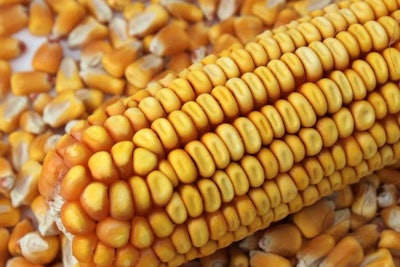

Maize, or corn as it is known in the U.S. and some other countries, is perhaps the most well-known cereal used in farm animal diets. Its global production nears 1,000 million metric tons, with over 35 percent of that being produced in the U.S. No wonder then why most international nutritionists follow the U.S. terminology calling it “corn” instead of maize. Corn in the U.S. is produced in the famous Corn Belt, located in the Midwest part of the country, and includes states such as Illinois, Ohio, Nebraska, Kansas, Iowa, Indiana, Michigan, Minnesota and Missouri. The top-four states (Iowa, Illinois, Nebraska and Minnesota) account for more than half of the corn produced in the U.S. Some of the best land-grant universities, specializing in agriculture and animal science, are located in these states.
China is the second largest corn producer, following very closely the U.S. They are expected to produce 23 percent of the global corn yield in 2015/2016, according to a U.S. Department of Agriculture (USDA) analysis. No doubt, this number will keep increasing over the years, as the Chinese feed industry and animal production sector realize the benefits of using corn over other sources of energy.
Brazil and the European Union are in a class by themselves, each producing a bit more than 7 percent of global yield, whereas the rest six countries produce no more than 13 percent summed altogether.
So, we have four major clubs: the U.S. and China as world leaders, Brazil and the EU as major producing countries, the next six countries (Ukraine, Mexico, Argentina, India, Canada and the Russian Federation) as significant producers, and the rest countries can be classified as minor players. This USDA map provides very useful analysis, showing projected 2015/2016 yields by country.
Now, the question becomes why is this so important, apart from a purely academic point of view? Here’s a list of five good reasons why you should keep this list close at hand:
- If you’re involved in supplying corn producers (many of which are also animal producers), it matters to know where to focus your marketing. Perhaps you need to find an emerging market or just focus on the big players.
- If you’re involved in buying corn, it matters to known where bargains may be found. But, quite often, bargains involve off-quality batches, so it is not always so straightforward. When it comes to mycotoxins, it pays to keep an eye on this list as corn mycotoxin profiles may vary by country and year.
- If you’re involved in research, it matters to know where funding is widely available and also where ideas might be coming from to avoid duplication or enable adaption to local conditions.
- If you’re involved in feeding corn to farm animals, it matters to know where new technology is bound to emerge, as corn is a multi-faceted ingredient that is constantly under development.
- If you’re involved in feed production alone, it matters to know how these top producers — who are also top users of corn — are storing, handling, grinding and mixing your number one ingredient.
From any point of view, knowing more about corn is always beneficial as this ingredient can account for up to 60 percent in most animal diets.
















